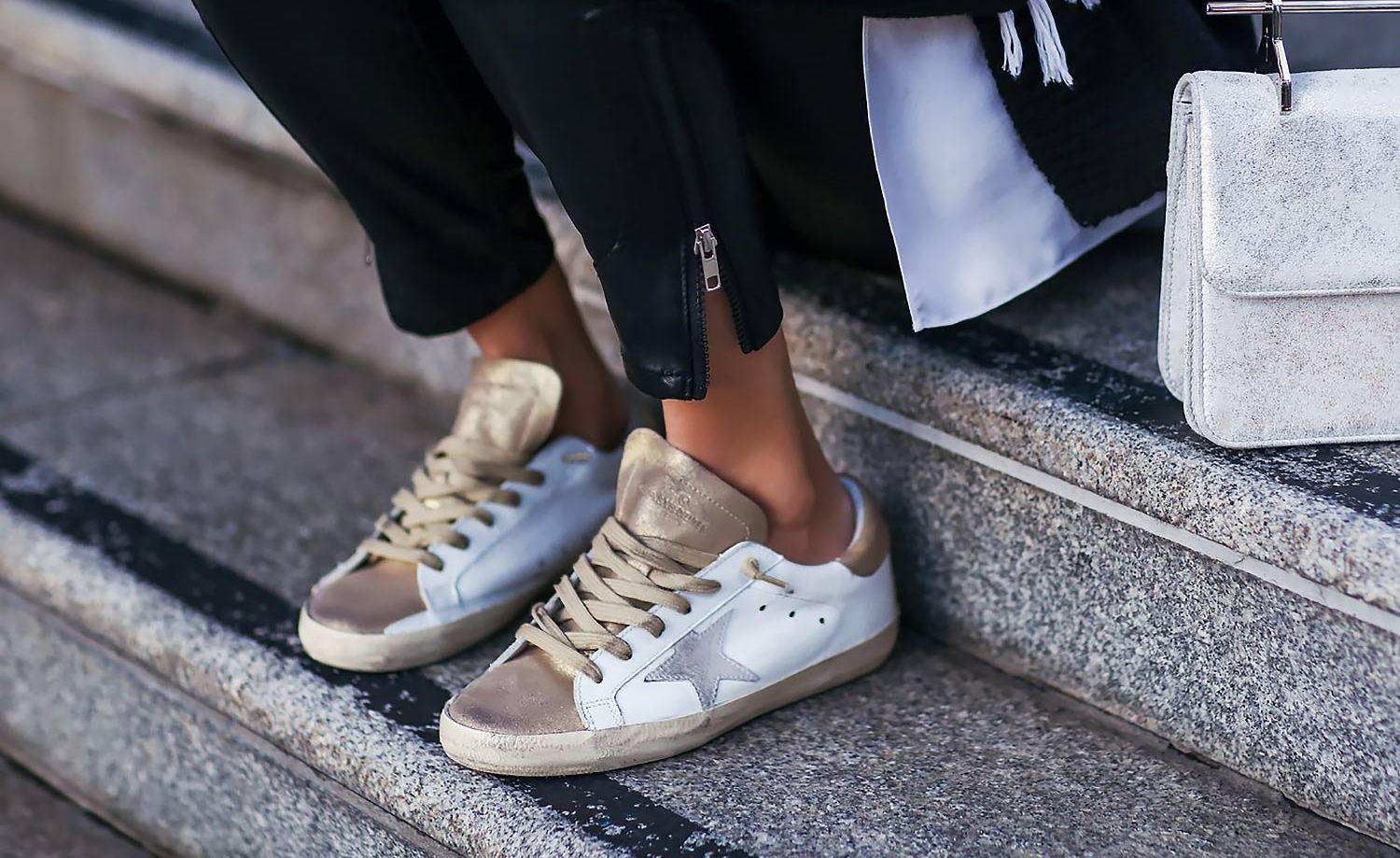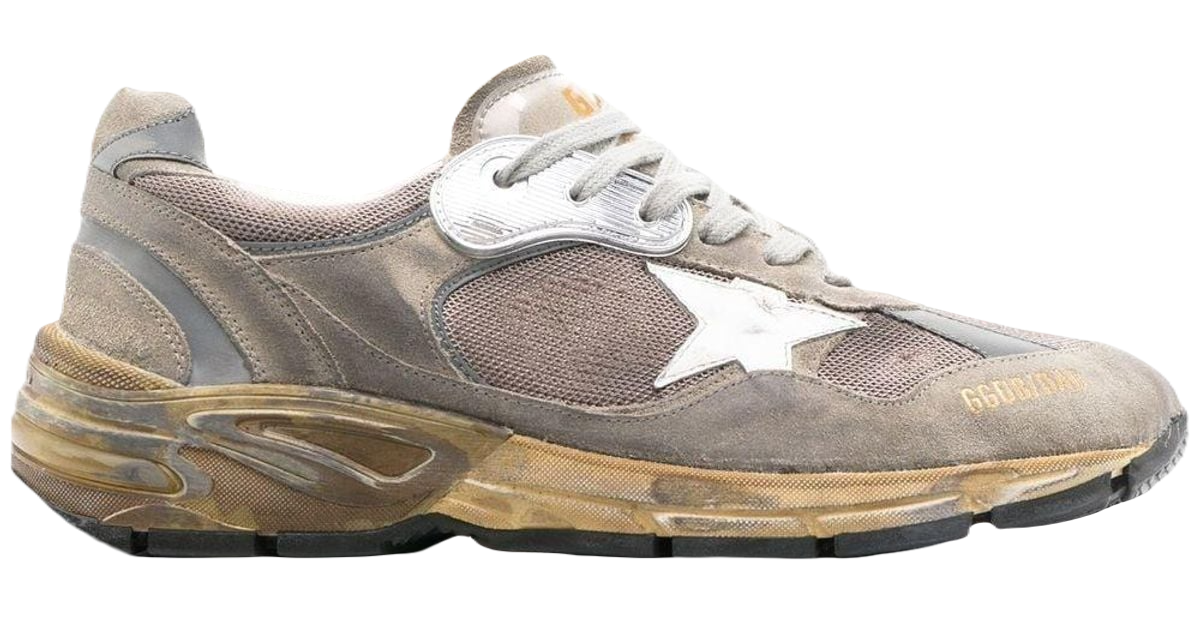Ruin
On Golden Goose sneakers.

Our best is trash.
We're experts in ruin.
It fascinates us. We value, celebrate, cultivate it. We worship ruins. Everything we touch, eventually, turns to dust, and we know it: nobody would visit The Acropolis if it looked like a shopping centre. There wouldn't be queues for the Great Pyramids if they were brand new.
There's power in the derelict, because it terrifies us; previews of death usually do.
I've seen happy, successful people detonate their suburban lives out of boredom; talented humans I respected, trash their bodies for lust. There's an autodestructive impulse in all of us.
Ruin's unfair though, because it's uneven.
Torn clothes and tape on your shoes is bad when you're poor; when you're rich, it's just sprezzatura. We've been sold on distressed denim since the 70s, such fashion proves you don't fear decay... and there's a certain devil-may-care to dressing like shit when you don't need to.

She was twentysomething, wearing expensive clothes and trash sneakers.
90s-era dad shoes aged by at least a decade of hard wear—

—and when I asked about them, ignorantly, she glared at me and said:
I paid $900 for these.
Holy fuck!
I don't pay attention to street shoots of Tay-Tay or Selena Gomez, never watched Gossip Girl (2022), was not to know that these were kicks beloved of rich mums slumming it; best paired with Balenciaga drinking spicy margs at The Beverly and eviscerating your credit card, playing kiss chase with your Pomeranians under the covers, fuck!
These shoes are a shell game. Trashy enough to look like shit, but respected by the trained eye. Still, to be willing to be seen by most people as having poor taste takes guts; a beautifully costly signalling move.
Golden Goose sneakers are handmade in Italy to the highest standards, from great materials; the ethically-paid makers go to great pains to distress them naturally. The process involves abrasion, marking, bedazzling, dirtying; Gallo and Rinaldo, the founders, wanted to recreate a kind of low-key luxury, nextdoor vibe, an ethos they called perfect imperfection. It's easy to see the whole thing as a kind of moral lapse, channelling Zoolander, taking the piss out of the poor, making a game of it, revelling in your own status.
But I get it: there is something about the pristine that's terrifying.
It feels like it demands a lot from us; if the table linen is too white, we're shy to eat; the perfect car that smells of new feels magnetic to scratches. The more pressure we put on ourselves, the more, every once in a while, we just want to say fuck it.

But mostly, damaged fashion means something because it was touched.
A tatty pair of trainers have been loved, worn with energy, have stories and momentum, that's why we like them.
That scrappiness is vital, why manufactured brands attempt to dispel their machinemade aesthetic, try to look tatty. It's the ageing that makes us.

Computerised, artificial minds tend to generate glossy slick impenetrable outcomes, perfectly executed. But there's texture in noise and roughness, there's love mixed in with sweat. There's a gorgeousness in imperfection, there's magic in ruin. It is unerringly human.
Dirty shoes aren't past their best; decay is our safeword for real.

In the future, when life's experiences are more virtual, we'll hunger for it. When perfection is a commodity, when the mainstream feels rendered and fake, luxury will need to be fucked up and handmade.
We'll seek it, even if we don't know why. Treasure its fragments, coo over battered excellence, credit the bruised hands of the maker.
We'll look for the signs of the wrecked and the real. Seek out ruin.
.
.
.
